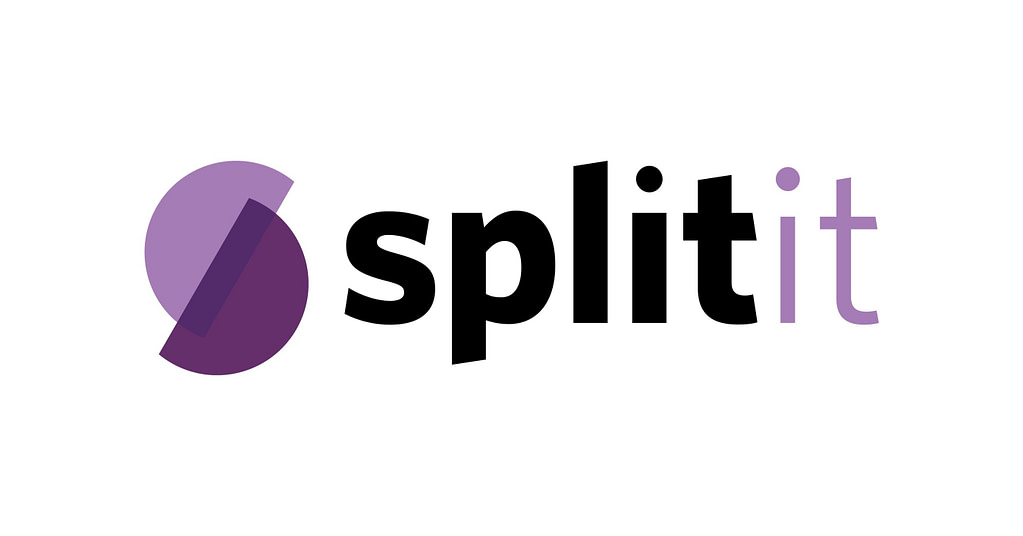An installment payment, also known as Buy Now Pay Later (BNPL), offers customers of online stores and marketplaces the option to pay in parts for products rather than the full amount upfront. These installment payment solutions are increasingly popular in eCommerce as they provide flexibility and affordability, enabling consumers to manage their budgets more effectively and merchants to increase their AOV and improve customer loyalty.
In other words, installment is a win-win for an eCommerce business, especially when catering to the growing demand for flexible payment options such as online shopping installment payments. The only thing you should do is partner with an online installment payment service that matches your business needs and the level of customer care. Here, we’ll examine what an installment method is and how to choose a provider.
How do Installment Payments work?
When customers select the installment payment option at checkout, they typically agree to a payment schedule that outlines the amount and frequency of each payment. The installment plan may be interest-free or may include interest charges, depending on the terms set by the retailer or the third-party payment provider. Once the customer completes the purchase, the merchant receives the full payment upfront from the payment provider while the customer makes the scheduled payments over time. This arrangement benefits both the customer, who gains immediate access to the product, and the merchant, who secures the sale without delay. Installment buying gives customers the convenience of owning a product immediately while paying gradually, making it especially appealing for high-ticket items.
Installment Payment Methods
There are several installment payment methods that eCommerce businesses can offer to their customers, each catering to different needs and preferences:
Fixed installment plans
These plans involve a set number of installment purchases made at regular intervals. The amount of each payment is fixed, providing predictability for the customer. This method is straightforward and easy to understand, making it a popular choice for both merchants and shoppers.
Flexible installment plans
Unlike fixed plans, flexible installment plans offer more adaptability, allowing customers to choose the payment frequency and duration that best suits their financial situation.
Interest-free installments
With interest-free installment plans, customers can spread the cost of their purchase over time without incurring any additional charges. This type of plan is particularly attractive to consumers, as it effectively provides a no-cost financing option. Merchants often use this method to boost sales and encourage higher-value purchases.
Interest-bearing installments
Interest-bearing installment plans involve additional charges based on the interest rate applied to the remaining balance. While this method can increase the overall cost for the customer, it may be more accessible for those who prefer extended installment purchasing terms and can afford the added expense. This option also allows merchants to partner with financial institutions, potentially increasing their revenue through interest earnings.
What is an Installment Payment system?
An installment payment system or installment payment software is a technological platform that enables merchants to offer their customers the option to pay for purchases in multiple smaller payments over time. These systems integrate with a website to provide a seamless checkout experience, where customers can select installment plans and manage their payments conveniently. There are a number of installment payment providers and services, including popular options like Splitit, Klarna, and Affirm, that you can choose from depending on your business needs.
- Splitit. It is a paid solution that works with credit cards Visa or Mastercard. Payments can be extended to 12 months, depending on the merchant. No credit card check or app is needed.

- Klarna. This paid service is omnichannel and available in multiple countries. It offers three options for eCommerce installment payments: 4 interest-free monthly payments, financing (from 0 to 29.99% depending on the credit rating), or an in-full payment in 30 days.

- Affirm. It is available in the US and requires a credit check and the application to be in place. Affirm reports to credit bureaus and calculate interest rates (from 10 to 30% APR) based on the applicant’s creditworthiness. Installment options vary from 3 to 36 months, depending on the merchant.

Read more about other payment gateways:
- Stripe Connect
- Accept Online Payments Around the World
- How Can You Accept Crypto Payments in Your Online Store or Marketplace
Every installment payment online shopping solution has its specifics that can attract different audiences.
For instance, Splitit is best for higher value orders like jewelry or exercise equipment, especially for ecommerce installments. It allows customers to extend the time, and accept installment payments to pay in full later. As Splitit deals with customers’ available credit, it’s a secure way to keep up with a budget and enjoy high-value purchases right away.
Klarna better suits customers who like multiple payment options, rewards and in-app shopping. Shoppers can spread their payments for day-to-day items like clothing, home goods, or electronic appliances.
Other Types of Installment Payment systems
Besides Buy Now, Pay Later (BNPL) services there are various types of installment purchase systems, each designed to cater to different business models and customer preferences. Here are the main types:
- In-House financing. Some eCommerce businesses offer their own installment payment plans without involving third-party providers. This in-house financing approach allows merchants to set their own terms and manage the installment process directly, often used by larger retailers with the resources to handle credit risk and customer management.
- Point-of-Sale (POS) financing. POS financing options are provided at the checkout stage, allowing customers to apply for credit and accept installment payments directly through the merchant’s website.
- Credit card installments. Some credit card companies offer installment plans that allow cardholders to convert their purchases into fixed monthly payments. This option can be convenient for customers who prefer to use their existing credit lines for installment payments
Benefits of Installment Payments
Installment payments provide substantial advantages for both merchants and eCommerce customers, creating a win-win scenario that enhances the overall shopping experience and business performance.
Benefits for merchants
- Increased sales and average order value. Merchants can attract more buyers by allowing customers to pay in installments, who might otherwise be deterred by high upfront costs. This often leads to higher sales volumes and increased average order values as customers feel more comfortable purchasing higher-priced items.
- Reduced cart abandonment. Installment payment options can significantly reduce cart abandonment rates by making purchasing more feasible and less stressful.
- Broader customer base. Offering installment payments can attract a more diverse customer base, including those who may not have immediate access to large sums of money. This inclusivity can help expand the market reach of eCommerce businesses.
- Improved cash flow. Many installment payment providers pay merchants the full purchase amount upfront, even as customers pay over time. This arrangement helps maintain healthy cash flow, enabling businesses to reinvest in growth opportunities.
Benefits for customers
- Affordability and flexibility. Installment payments make high-ticket items more affordable by breaking down the total cost into smaller, manageable payments. This flexibility allows customers to budget more effectively without compromising on their purchasing decisions.
- Immediate access to products. Customers can enjoy their purchases immediately while paying over time. This immediate gratification can enhance the shopping experience.
- No or low-Interest options. Many installment payment plans offer interest-free options, making them an attractive financing solution without the additional burden of interest charges. Even interest-bearing plans often have competitive rates compared to traditional credit options.
- Enhanced financial management. Installment plans help customers manage their finances better by offering predictable payment schedules. Knowing exactly when and how much they need to pay reduces financial stress and improves overall money management.
How to connect Installment Payment system to your website
Integrating an installment payment system into your website can be a straightforward process, especially with the right guidance and tools. Here are the steps to connect an installment payment system to your site, and optimize the seamless checkout process:

Select an installment payment provider that suits your business needs. Popular options include Afterpay, Klarna, Affirm, and PayPal Credit.
Sign up for an account with your chosen payment provider. This will typically involve providing business information, verifying your identity, and agreeing to the provider’s terms and conditions.
Once your account is set up, the provider will give you API credentials or access tokens. These credentials are necessary to integrate the payment system with your website.
Many payment providers offer plugins or software development kits (SDKs) for popular eCommerce platforms like Shopify, WooCommerce, Magento, and BigCommerce.
After installation, configure the payment options within your eCommerce platform’s admin panel.
Before going live, thoroughly test the installment payment integration to ensure it works correctly.
Can you do this on your own? Sounds not too complicated, but we suggest delegating all integrations especially with payment service provided to trusted partners, who can configure new functionality, integrate it seamlessly to your checkout process, add it to the overall reporting workflow and test for compatibility with the whole website.
Installment Payment Best Practices for eCommerce Businesses
Implementing installment payments can significantly enhance the shopping experience and boost sales, but eCommerce businesses need to follow best practices to maximize benefits and minimize risks. Here are some key practices to consider:
- Choose the right provider. Select a reputable installment payment provider that aligns with your business needs and customer preferences. Evaluate factors such as fees, integration capabilities, customer support, and the provider’s reputation in the market.
- Clear communication. Transparently communicate the terms and conditions of installment plans to your customers. Clearly outline the payment schedule, any associated fees or interest, and the consequences of missed payments.
- Simplify the checkout process. Ensure the installment payment option is seamlessly integrated into your checkout process.
- A streamlined, user-friendly experience powered by integrated payment solutions will encourage more customers to choose this payment method, reducing cart abandonment rates and increasing conversions.
- Offer multiple options. Cater to a broader audience by providing various installment plans, such as interest-free and interest-bearing options and different payment schedules.
- Monitor and optimize. Review the performance of your installment payment offerings regularly. Analyze metrics such as adoption rates, average order values, and default rates to identify areas for improvement. Use customer feedback to refine your payment options and enhance the overall experience.
At Simtech Development, we can connect the service of your choice and finetune the integration further, ensuring seamless compatibility with various installment payment methods.
Depending on the service you select, your eCommerce website customers will be able to choose an item to pay in installments, pay for their orders by credit card, or use their existing credit card limit. With our expertise in eCommerce installment payments, we can make this integration worthy for vendors and customers, and perfectly designed to fit your project needs. Whether you’re targeting budget-conscious buyers or promoting high-ticket items, supporting different types of instalment payments can help you capture more sales and build customer trust.

